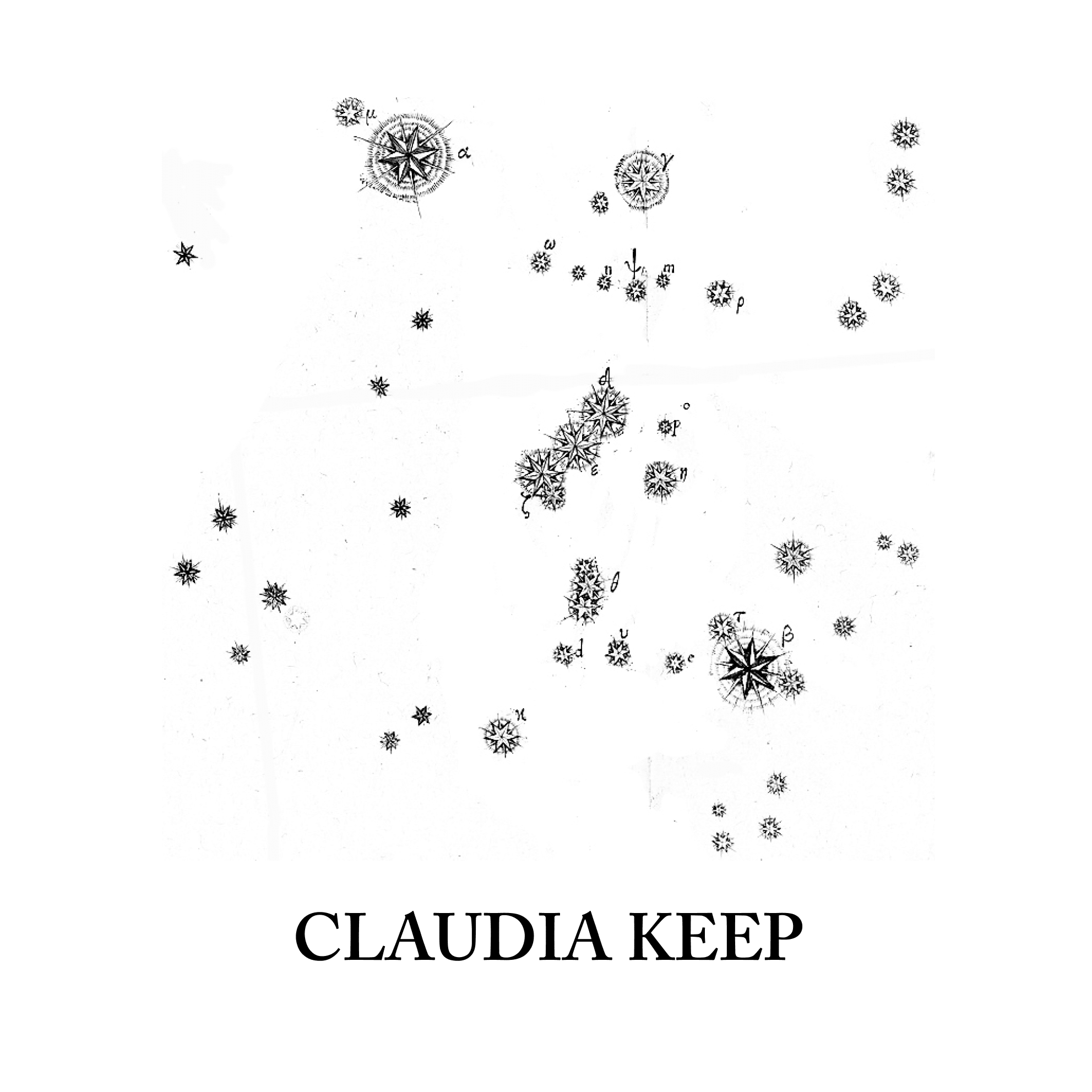
Claudia Keep

1. Can you introduce yourself?
My name is Claudia Keep—I am a painter currently based in Vermont.
2. Could you tell us more about artists that inspired your artistic path?
There have been many—William Eggleston, Stephen Shore, Manfred Willmans, Lois Dodd, John Singer Sargent, Jacob Lawrence, Horace Pippen, Alex Katz, John Currin, Marlene Dumas, Richard Artschwager, and Alice Neel, to name just a few, all hold a place along my artistic “path” though they aren’t all necessarily who I look to at the moment. Inspiration is funny because it isn’t always about work I necessarily like, but rather work that has unlocked ideas or freed me from certain preconceived notions of what art is supposed to be.
3. Are there writers, philosophers, or musicians that influenced you as well?
I think there is an unavoidable web of influence in which I exist as a consumer of media. What I have read and listened to influences me in that it shapes the way I view the world. I was swimming once and it reminded me of an Italo Calvino short story, or when painting a bedroom with an iPhone on the bedside table, I am reminded of Baudelaire’s Painter of Modern Life, listening to music in the car lends a certain emotional poignancy to the landscape going by, and so on, but I don’t often intentionally look to philosophers, musicians, or writers for literal ideas for paintings, though I do enjoy their work.
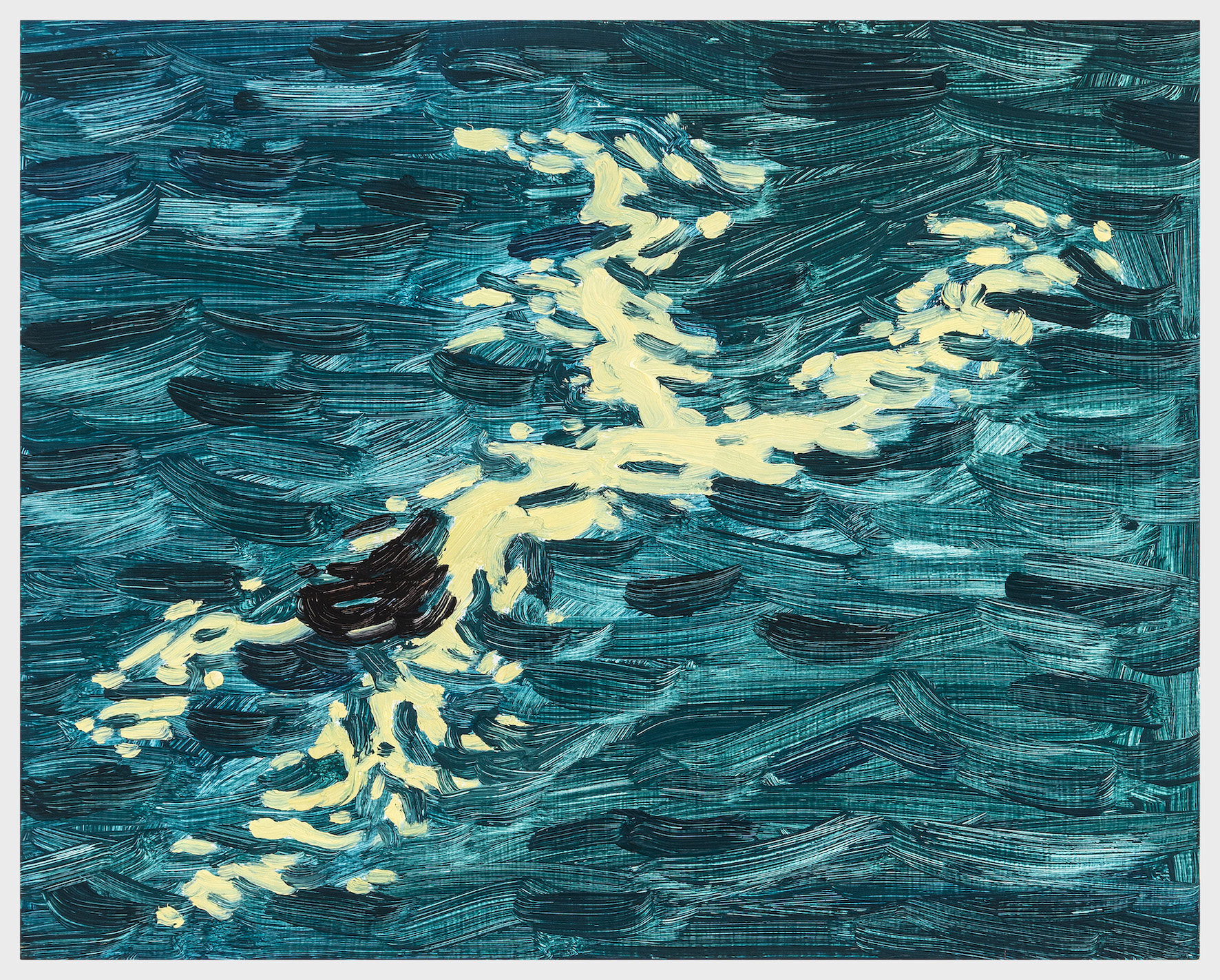
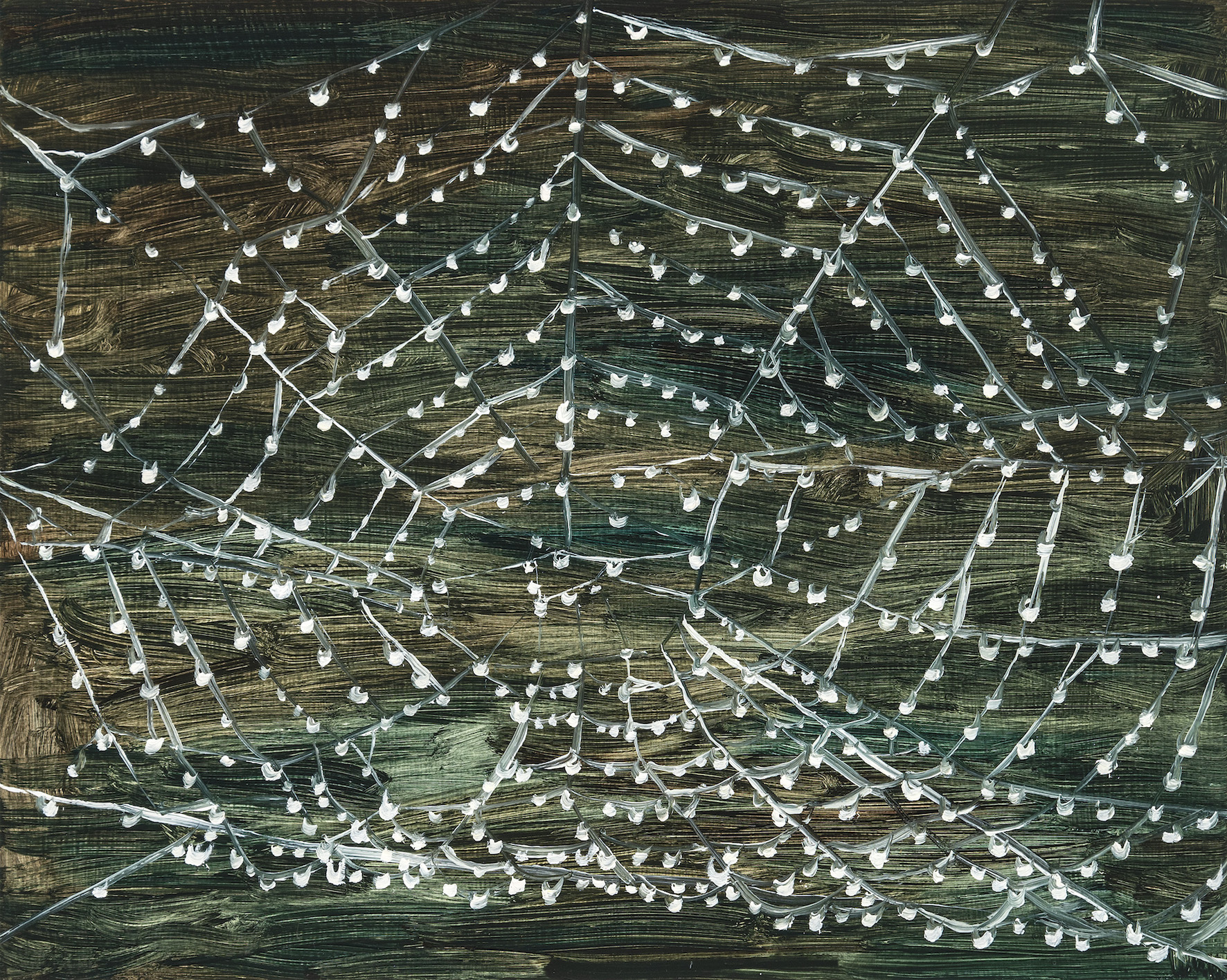
4. How does the idea of a painting come to your mind?
I paint almost exclusively from life, using images I take with my iPhone. Mostly I’m inspired by something I have seen, but every once in a while an idea will come to me fully formed, and then I’ll try to find it in real life. For example, I had the idea that I wanted to paint a white dog running through the snow, so one snowy night, I walked to the dog park where I was living at the time and took pictures of the dogs playing.
5. The actual theme of the Revue Eclipse is the Assignificant, defined as the painting of ordinary moments and subjects, without the will to signify or represent any political or conceptual meaning but rather create a resonance with the viewer; would you adhere to this concept?
Yes, I think so. I think no subject is innocent of meaning; nothing can really exist outside of our structure of signification. I think the artist by virtue of existing is political, but yes, as you say—I aim to create a resonance, and evoke sensation and an emotional veracity, rather than illustrate one specific meaning.
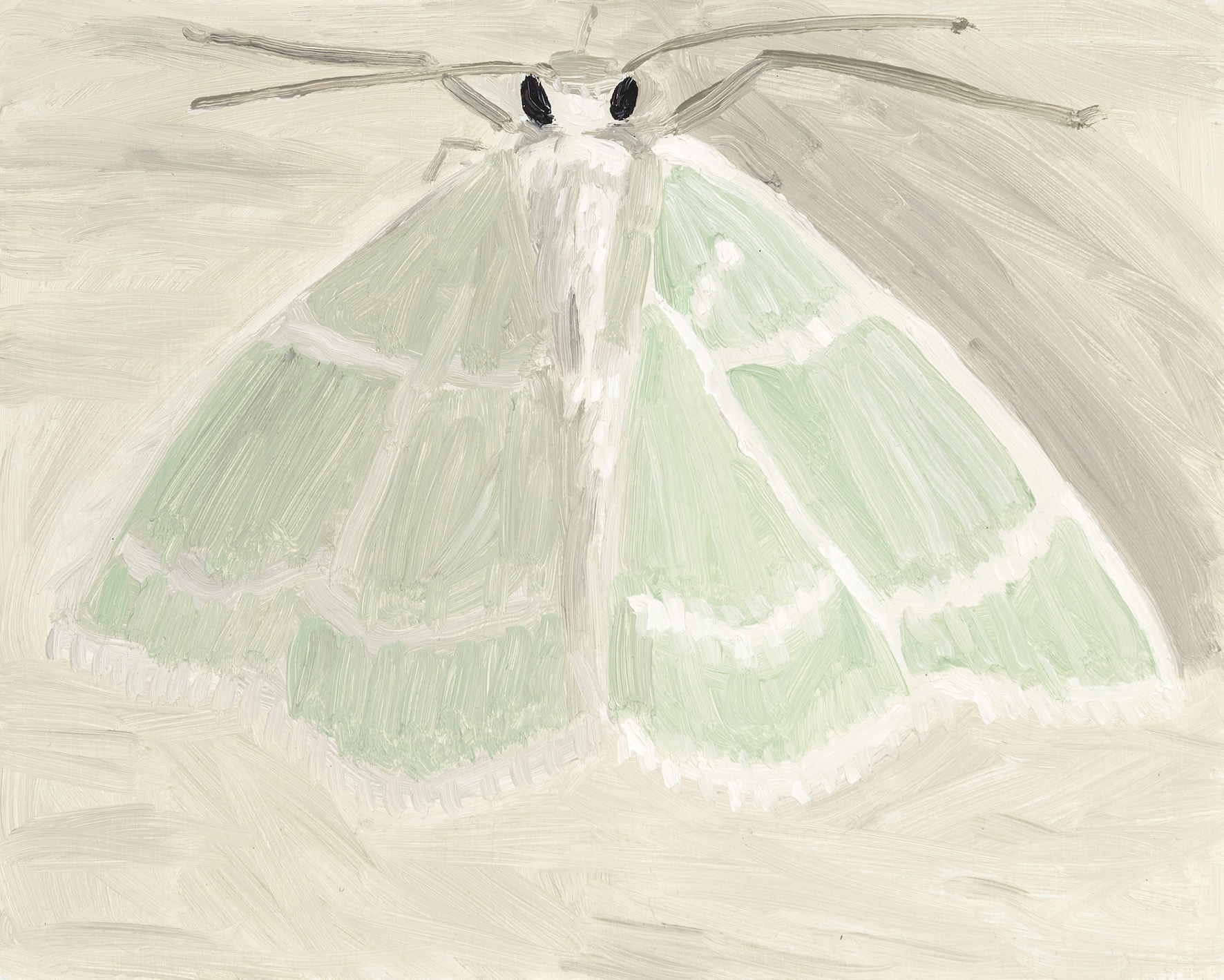
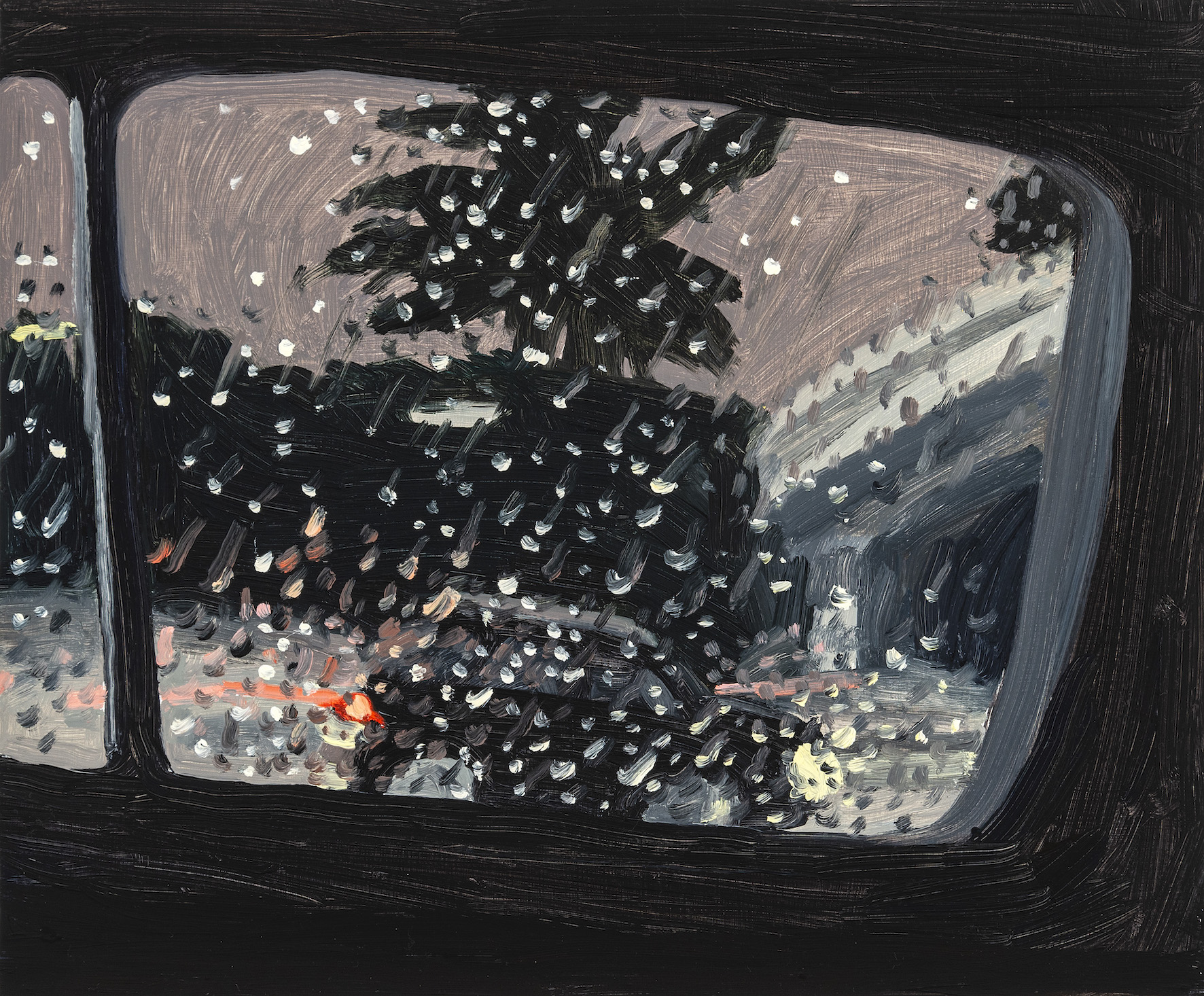
6. We often notice the motif of light gushing from drops, and more broadly the depiction of glittering elements; could you tell us more about this visual motif in your works?
I enjoy painting it, and it also represents an effort to capture the various ways that light shapes, distorts, and illuminates the world around us. The first time I painted light sparkling on the water, it was kind of a personal joke and challenge—I thought it was kind of “too pretty” but then I became sort of obsessed with it. Light can be so many things—it can be soft and dim, violent and intrusive, pleasant, or oppressive. I’m also very drawn to painting different types of darkness, which is really just another way to paint light. I like the way light shapes and defines darkness—stars, or the light cast by a lamp create a sense of space in an otherwise undefined plane of dark color.
7. Movement is depicted in most paintings, natural elements are moved by the wind, rain, or more subtle alterations of some elements. Paradoxically, a certain serenity emanates from your works. The movement doesn’t seem to be the result of existential anguish, but rather a spontaneous motion of anything that exists. How do you apprehend the movement in your works, and what meaning do you give to it, if any?
I’m interested in the tension created by movement, or implied action. I like to paint spaces suggestive of something having happened or about to happen, I like the idea of trace—evidence of someone or something, like the depression left in a pillow where someone has slept.
I’m also interested in trying to capture a sense of movement because I am trying to paint what it feels like to see something. I think sensation comes with movement or at least a certain suggestion of physicality.
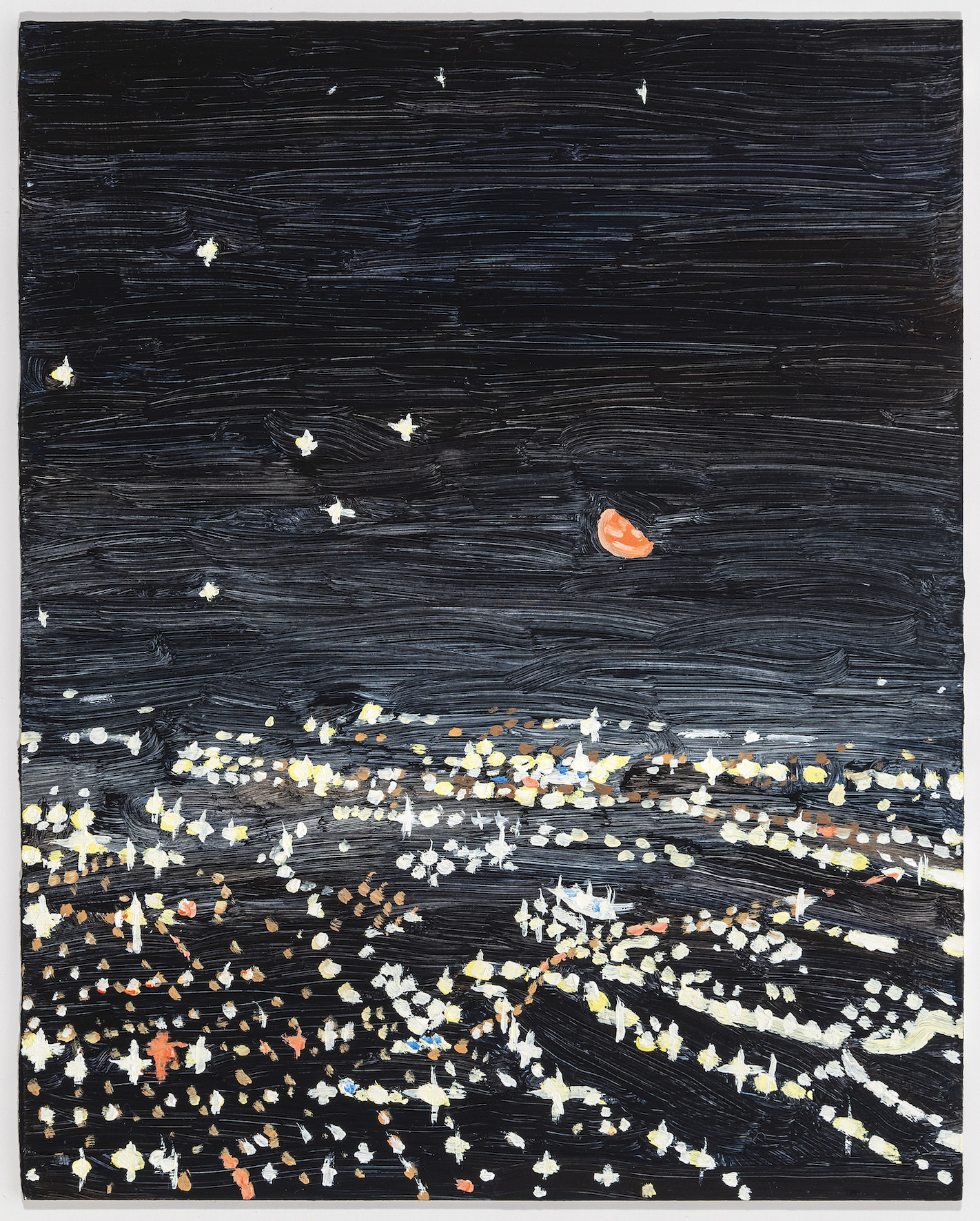
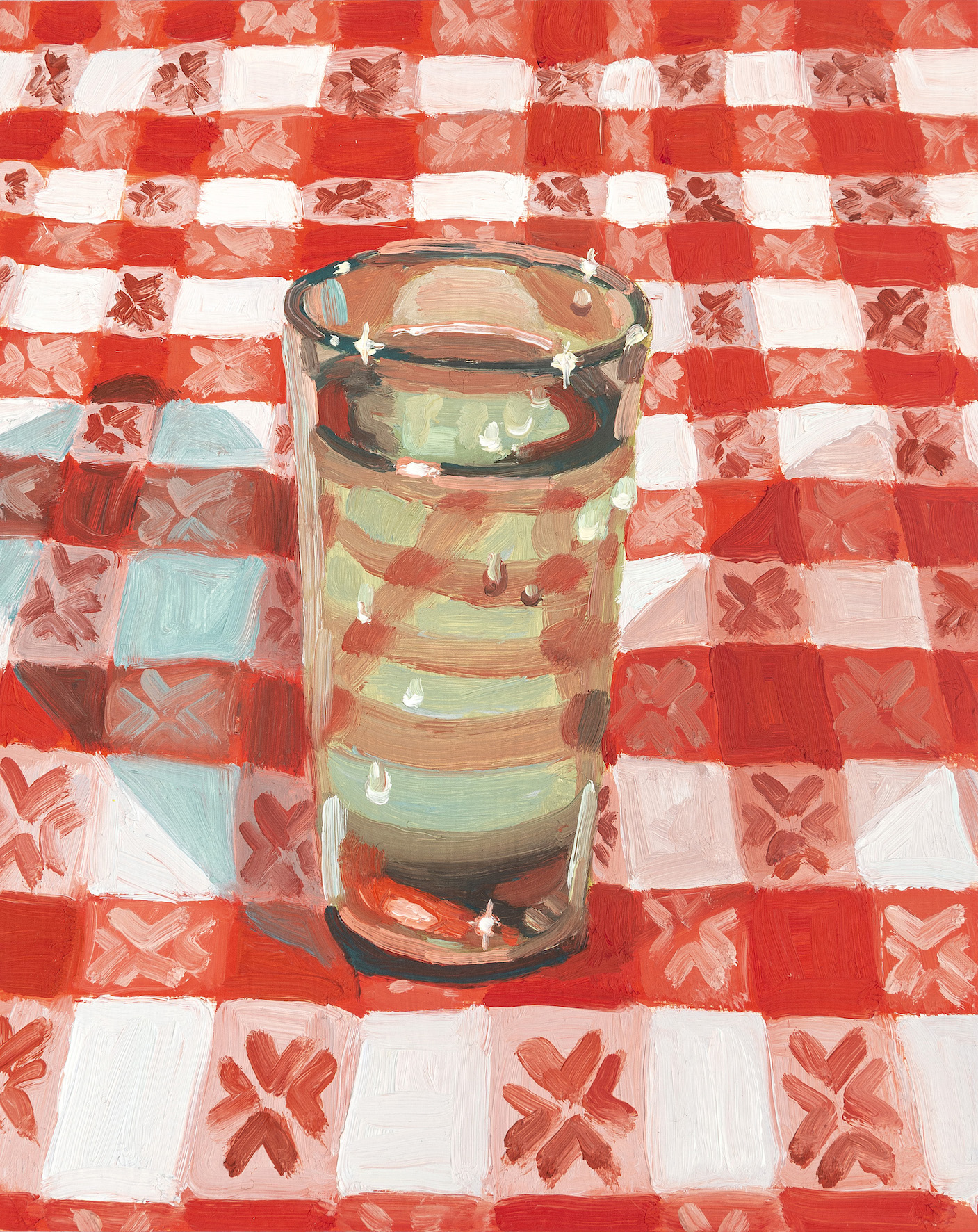
8. We often associate intimacy to the idea of closeness or the bedroom space. What is interesting in your work is that this feeling of intimacy seems to be triggered by a distant point of view on very common moments ( like watching a landscape through a car window.) Do you relate to this idea?
Yes, I do relate to that idea. I think it is intimate because it is personal. The distance in my paintings reflects a human perspective—it reflects where I was physically in relation to the thing that I photographed. Every painting is sort of about that experience of looking and about that space between the viewer and the subject.
9. A very atmospheric impression emerges from your paintings that come both from subject and color. Your palette is very soft, with some vivid moments. What attracts you in those colors?
I think there is more complexity and nuance in softer colors. I use color and value to create contrast and a sense of the dramatic—I think that contrast is more interesting with softer colors. I think the imagery I’m interested in mostly exists in the range of “soft colors.” In my experience as a “looker” many things are soft and out of focus—there is a lot of grey and green and blue, and then there are these little moments of brightness and light that catch my attention and stand out against the blur of everything else, like a blue butterfly resting in a gravel drive way, or the red and green lights of a plane against an otherwise blue black sky.
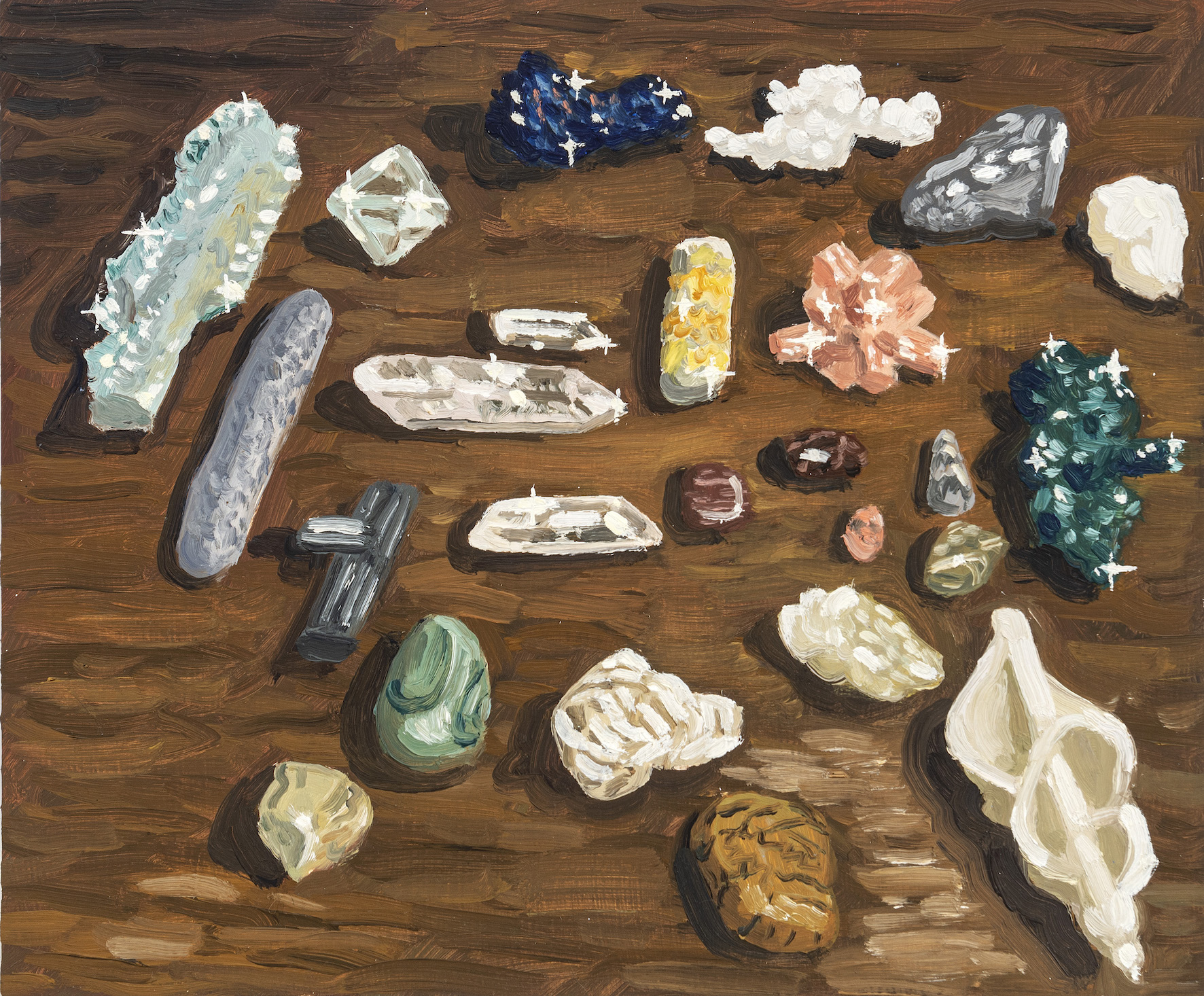
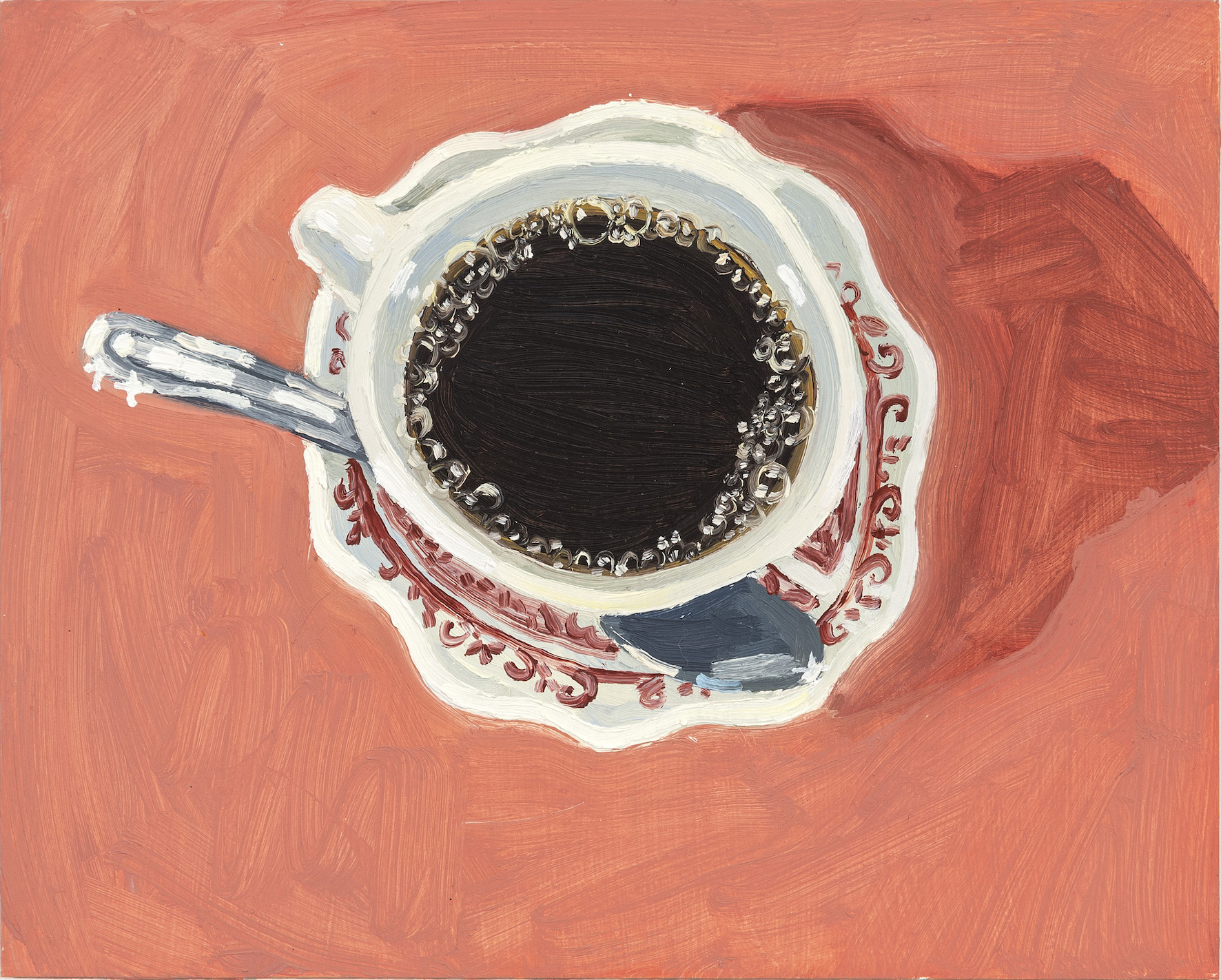
10. Your paintings can be read as a collection of images that seem to translate a desire to embrace the world, to appropriate a part of it. You recently painted a collection of stones that seems to be an allegory of your practice. Does the notion of collection interest you?
I haven’t really thought about collecting in an intentional way, though notions of desire have been something I’ve thought about for a long time in loose relation to my work. I think that painting allows me to “have” things without actually having them. I see something beautiful or experience something and by painting, I can preserve a piece of that. I think the impulse to paint something is sort of a similar impulse to that of wanting to have something. Desire is there and a certain degree of fixation, but ultimately I suppose I think of my work as more diaristic than acquisitive.
11. The human presence is more suggested by the idea of a look on things or through the objects depicted. When we see humans, they are immersed in water or fading, could you tell us more about the way you apprehend human figures in your work?
With some exceptions, I’m mostly interested in the figure abstracted and distorted by it’s environment. I’ve done a few more specific and individual figure paintings, but I am mostly interested in figuration that has some generality to it—that is less about the individual or character depicted, but more about a human experience that is not tied very specifically to an individual identity. I’m interested in trying to capture a sense of experiences I believe to be very common, like lying in bed in the morning, seeing the outline of someone lying next to you in the dark, watching your own hands as you swim, or seeing the blood glow in your hand if you hold it over a flame.
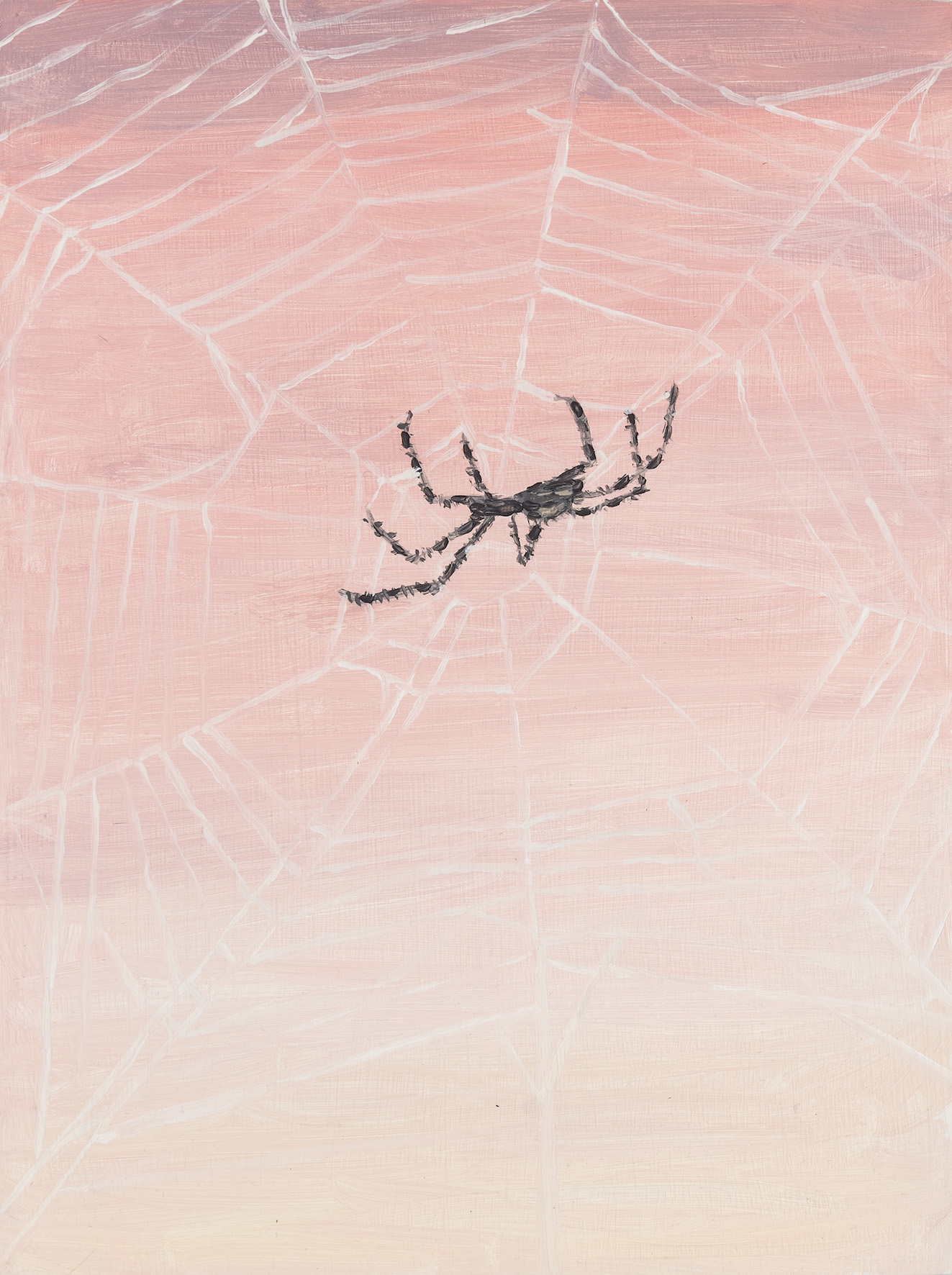
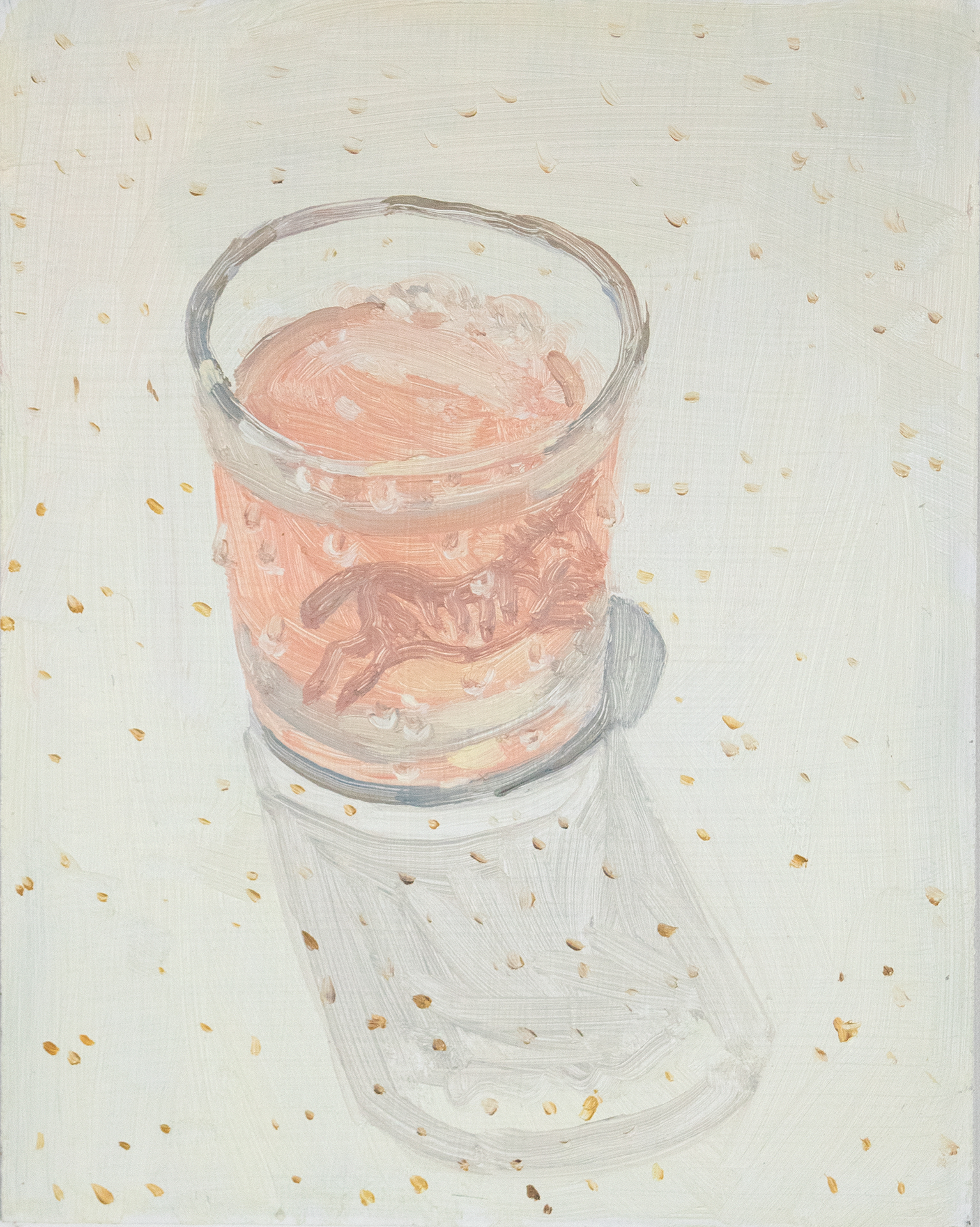
12. Tell us about a typical day of your work?
In the morning I walk to my studio—it’s about a 25-minute walk from my apartment. I drink coffee and put on music. If I know exactly what I want to paint I can start right away, otherwise I spend time going through my photo roll and to-do list of images. I paint on the floor, looking at my reference images on my phone. I do a lot of staring at my work. Sometimes I’ll go on a short walk to get more coffee or a sandwich or something. I paint till early evening and then go home. I try to paint every day unless I’m out of town or something special comes up. I’ve started doing yoga in the last year and I try to go to a class either in the morning or evening most days.
13. Do you have any future or actual projects to share with us?
I have a few shows coming up this fall.

